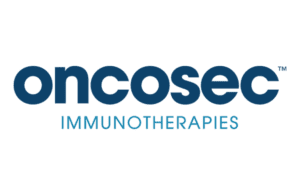 OncoSec (NASDAQ: ONCS), a cancer immunotherapy company currently focused on R&D, is planning U.S. promotion of its tavokinogene telseplasmid (TAVO) drug for a type of metastatic melanoma — and eventually other cancers.
OncoSec (NASDAQ: ONCS), a cancer immunotherapy company currently focused on R&D, is planning U.S. promotion of its tavokinogene telseplasmid (TAVO) drug for a type of metastatic melanoma — and eventually other cancers.
“We don’t currently have a sales force. If successful, we’re going to need to have a sales and marketing team embedded in the company or out-license that,” said Dan O’Connor, OncoSec CEO.
The company recently received $5 million from Woburn, Mass.-based Sirtex, a manufacturer of targeted cancer therapies, for a non-exclusive option to jointly promote OncoSec’s TAVO (tavokinogene telseplasmid) for melanoma in the U.S. If the option is exercised, Sirtex will pay an additional $25 million.
The two companies are similar in their oncology focus using a drug-device combination.
In the following interview, O’Connor shares details of the potential partnership with Sirtex provides an overview of the company’s progress on the R&D front, including a Phase 1 trial for CORVax12, a COVID-19 vaccine that OncoSec is developing with the Providence Cancer Institute.
DDD: What led to OncoSec’s option agreement with Sirtex Medical to co-promote TAVO?

OncoSec CEO Daniel O’Connor
O’Connor: Sirtex already has been marketing a product for liver cancer. They already have a sales focus in oncology.
We expanded the Sirtex relationship with this agreement, but we have a buyback option.
And if they exercise the option, the rights are nonexclusive. We can field a sales force if we choose to do so.
The deal grants them an option for a $5 million payment. They have to exercise that option within 90 days of when we would file a biologics license application with the FDA for the program we’re working on.
DDD: OncoSec announced a strategic investment from Sirtex in February 2020. How has your partnership with Sirtex evolved since then?
O’Connor: When we did that financing with them, we also entered into a services agreement with Sirtex. We hired them to help us do some of the preparatory commercial work — sales and marketing analysis and messaging.
If Sirtex chooses to exercise its option to co-promote TAVO for anti-PD-1 checkpoint refractory metastatic melanoma in the U.S., we’ll establish a joint development committee. It will be an extension of the groups already working together with a different focus. We would be putting together a promotion plan to market the drug in the U.S. in this limited indication, which we would hope to be a gateway indication for other approvals, which they don’t have rights to.
We retained final decision-making authority over all of the major product elements, such as pricing and sales, but we will jointly decide on the strategy around the promotional activities.
DDD: Could you give an overview of where OncoSec is from a clinical trial perspective?
O’Connor: The first lead indication we are targeting is anti-PD-1 checkpoint refractory metastatic melanoma. It’s an orphan indication and a program that we plan to seek accelerated approval for upon the maturity of the data that is happening right now.
We started the study, known as KEYNOTE-695, approximately three years ago.
The top line is, the study is fully enrolled. Our goal is to seek an accelerated approval upon maturity of the data. And we’re doing this in partnership with Merck under a clinical collaboration agreement.
Merck expanded the relationship with us to a second program known as KEYNOTE-890 for metastatic triple-negative breast cancer (TNBC). Late-stage TNBC is an area where the checkpoints have limited, if any, activity. That’s because those late-stage TNBC tumors are generally considered to be ‘very cold tumors’ or lacking the immunological components necessary for a patient to get a benefit from checkpoint blockade.
We had 20 or 25 patients in cohort one of the KEYNOTE-890 study. Preliminary data were presented at the San Antonio Breast Cancer Symposium.
That study is open, and hopefully, we’ll get enrolled this year and might see some preliminary data from that study.
DDD: When you entered the pharma industry, you learned the drug development process in a CRO setting. How has that shaped your perspective?
O’Connor: When you think about what we do at companies like OncoSec, 80% of what we do is running clinical studies. Knowing how that process works from firsthand experience was very helpful.
DDD: What led you to OncoSec?
O’Connor: In my career, I’ve gravitated towards things that I felt had a lot of potential but weren’t tapped into. I felt that way about OncoSec. I liked the technology, but I thought it was underappreciated, especially the device component.
I thought this drug-device combination is achieving what we’re all been trying to accomplish with cancer immunotherapies from the beginning, which is using drugs to harness the body’s natural immune response so we could avoid the side effects of cytotoxic therapies like chemo and radiation. Some of those goals have been achieved with drugs like Keytruda, but those drugs have significant side effects. And what I saw with the device component of OncSec’s system was something that delivered a gene into a cell using transfection — using pulses of energy to transfect DNA.
DDD: How did OncoSec get involved in the COVID-19 vaccine space?
O’Connor: In late 2019/early 2020, we started to ask ourselves whether our cancer immunotherapy or learnings from IL-12 could be in any way helpful towards developing a vaccination approach to cope against COVID-19.
Our researchers looked at it and said they thought there was a very real potential that IL-12 could enhance vaccination. We’re not an infectious disease company, and we don’t intend to be one, but we thought it’s almost incumbent upon us to try to help if we can.
We wrote a white paper explaining the concept and shared that with the NIH, the same laboratory that developed the glycoprotein — the so-called S-protein (spike protein). There’s a similar version of that being used in Moderna’s mRNA vaccine.
The folks at NIH liked the concept of adding IL-12 along with the spike protein with a DNA approach. They offered to license their spike protein non-exclusively for research.
At the same time, cancer researchers with the Providence Cancer Center also saw the idea and liked it. They offered to file an Investigational New Drug Application with the FDA, and in the end, they got one.
It’s an OncoSec/Providence program. It’s our product candidate being used.
We’re grateful for the opportunity to see if IL-12 can help. We’re not trying to offer a vaccine for the masses, absent a very big finding in this study that’s happening at Providence.
We are thinking of this program as a second-generation vaccination approach using something to enhance the vaccine for patients who may need something more, i.e., those patients who are immunocompromised like a cancer patient.
There are still some open questions about the vaccines being used, like the persistence of immunity, that still need to be further understood. But if IL-12 can enhance a vaccination approach and increase cellular immunity or enhance immunity persistence, I think it’s definitely worth exploring.
It’s in the hands of Providence Cancer Center now. We may have some data to talk about, but our main focus is still cancer immunotherapy.